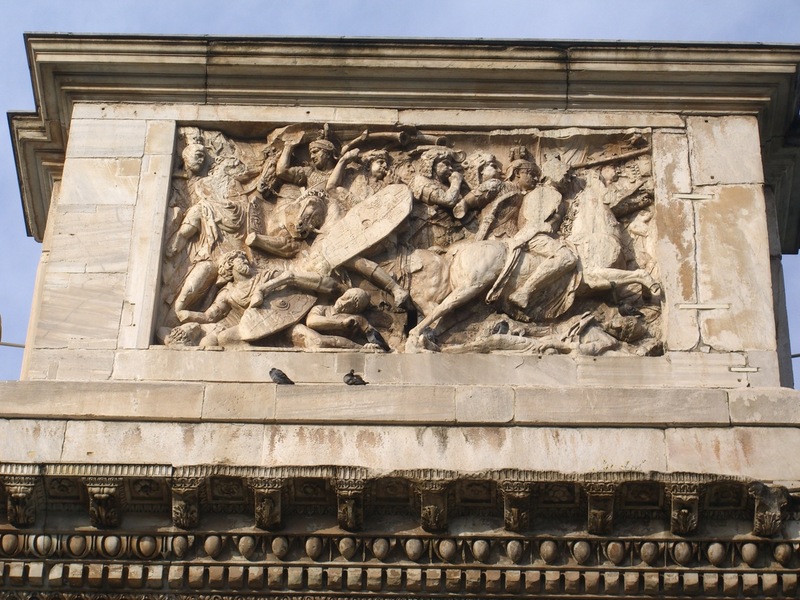Visibility and Memory
The sculptural elements on the Arch of Constantine present a fascinating and unique viewing experience due to the abundant use of spolia. The arch’s designers pulled sculptural elements from various monuments dedicated to Trajan, Hadrian, and Marcus Aurelius respectively, and compiled them all onto the arch, creating a collage of styles.1 The spolia were not randomly chosen, however, but was picked with a specific ideological purpose in mind.2 The spolia were purposefully chosen from monuments dedicated to so-called “good” emperors of the past,3 and a viewer would not necessarily have to be an expert to recognize their original locations (particularly if they remembered the construction of the arch).4 The viewer is encouraged to associate Constantine with those emperors through the use of high quality sculptural spolia from the monuments of well-esteemed emperors of Rome’s past, as well as the use of parallell images of Constantine placed nearby.5
This practice also alters the viewer’s memory of the past emperors, such that when a viewer goes on to see a monument dedicated to one of the three “good” emperors, that viewer might remember Constantine through the process of “cued retrieval”.6 These associations served to legitimate Constantine’s reign as emperor. Some scholars, however, who see a potentially negative reception of recarved portraiture, as it is a practice that might be closely related to damnatio memoriae in the viewer’s mind. Other scholars believe that the distance and the high quality recarving work would make it extremely difficult for the average viewer to recognize a recarved piece, and thus would invoke no negative reactions.7
_____________________________________
1 Jessica Hughes, “Memory and the Roman Viewer: Looking at the Arch of Constantine,” in Memoria Romana: Memory in Rome and Rome in Memory, ed. Karl Galinsky (The University of Michigan Press, 2014), 105-106.
2 Hughes, “Memory and the Roman Viewer,” 103.
3 Siri Sande, “The Arch of Constantine -- Who Saw What?,” in Patrons and Viewers in Late Antiquity, eds. Stine Birk and Birte Poulsen (Aarhus University Press, 2012), 287.
4 Sande, “The Arch of Constantine,” 285.
5 Hughes, “Memory and the Roman Viewer,” 108.
6 Hughes, “Memory and the Roman Viewer,” 113.
7 Sande, “The Arch of Constantine,” 280-281.
